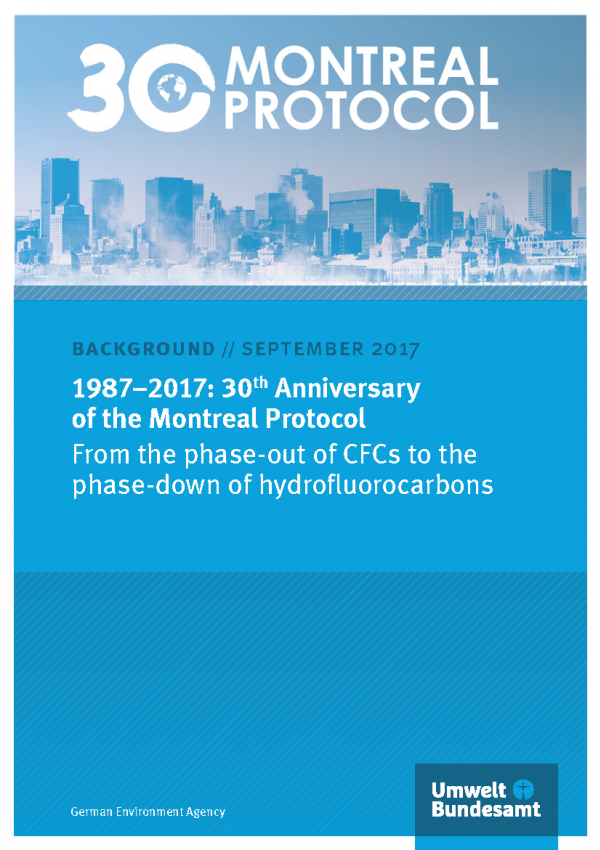On 16 September 1987, 24 States and the European Community signed the Montreal Protocol. It initiated the mandatory phase-out of chlorofluorocarbons (CFCs) and thus stopped the further destruction of the ozone layer by these substances. The switch to alternatives to CFCs with their high global warming potential also contributes to climate protection.
Due to the worldwide implementation of the Montreal Protocol, ozone-depleting substances such as CFCs are hardly used today. Atmospheric concentrations of these substances are slowly declining due to natural decomposition processes and the size of the “ozone hole” over Antarctica is also becoming smaller.
Because CFCs and other halogenated substances are also very effective greenhouse gases that heat up the climate up to 14,000 times more effective than carbon dioxide (CO2), the Montreal Protocol has contributed not only to protecting the ozone layer but also to climate protection.
With the Kigali Amendment for the worldwide phase-down of climate-damaging hydrofluorocarbons (HFCs), which has been agreed on in October 2016, the Montreal Protocol was extended to a new group of substances.
In a background paper on the 30th anniversary of the Montreal Protocol, the German Environment Agency describes the history of this important international agreement from the discovery of the “ozone hole” to its signing and implementation. In addition, the paper provides information on the HFC use today and on environmentally friendly substitutes and techniques, especially for refrigeration and air conditioning.


